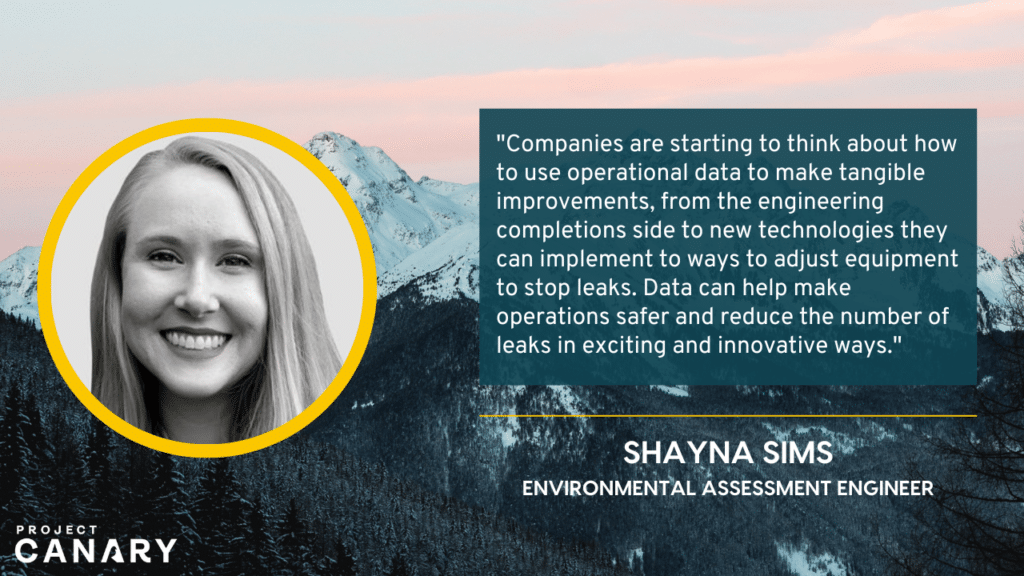
What is your background in oil and gas, how did you get into the industry?
I went into college with an eye toward getting into the oil and gas industry. I got my degree in Petroleum Engineering at the University of Texas at Austin, where I also got a certificate in Business Foundations. It was important for me to understand both the engineering side and the business side of the industry. Out of college, I joined Schlumberger as a field engineer, where I had the chance to really dig and understand day-to-day operations. The pandemic was, as it was for so many people in the industry, a challenging time—but I used the market downturn as an opportunity to return to school.
I’ve always been interested in how the oil and gas industry uses data—companies have so much data available and I’m passionate about how to use it more effectively. I returned to UT Austin and got a data analytics and visualization certificate. The program was an intensive six-month boot camp that walked through, step by step, how to leverage programs like Excel, PowerPoint, Python, and Tableau to visualize data in an actionable way.
What brought you to Project Canary?
I came across Project Canary in my job search. The more I researched and learned about the company, the more I realized it was an opportunity to leverage my experience in data analytics and my field and operational experience.
I was interested in how Project Canary used monitors to catch leaks while also taking a more holistic approach to operations via environmental assessments. As I went through the interview process, I realized Canary had an exciting approach to the oil and gas industry. But it also has a culture that values its employees and new and creative thinking.
How is working at Project Canary different than working in the field or for an operator?
Oil and gas is a well-established industry. A lot of people have been doing things a certain way for a long time. At Project Canary, I have some distance from day-to-day operations that, in many cases, helps me and the other environmental assessment engineers see things differently. As a former field engineer, I understand our customers’ challenges, but I’ve also seen how different customers approach processes. That critical distance allows me to look at operations in a new light and share knowledge with customers.
Can you describe a day in the life of an environmental assessment engineer?
Part of what I love about my job is that every day is different. When I’m in the office, I check in with my customers, helping them through the assessment process and guiding them through document uploads. We spend a lot of time reviewing final reporting with them and sharing knowledge on improvements they can make.
We’re looking at more than just the documentation, though. I also get to go into the field with my customers so I can move beyond the paperwork and get an on-the-ground perspective of operations. Documentation tells you a lot, but it doesn’t give you everything. What are the environmental controls they have in place? What is their culture of safety actually like? Doing on-site visits allows me to talk to production and EHS teams to get a holistic picture of operations.
What is the biggest misconception surrounding the environmental assessment process?
We’ve had customers that get overwhelmed by the number of criteria we’re looking at when they first get our document request. But it’s important to remember that a Project Canary engineer works with you at every juncture to make the process as easy and seamless as possible. I’m with my customers every step of the way – through the subject matter expert interviews, document uploads, and site visits. Our assessments are some of the best on the market, and it’s because we really dig into the details. We’re looking at environmental impacts, community impacts, safety impacts, as well as engineering due diligence.
What is the most exciting development you’ve seen in oil and gas in the past 3-5 years?
There have been a lot of really exciting developments over the past few years. The technology has advanced significantly, and operators have a really exciting mix of new tech at their fingertips. Historically, OGI cameras have been used to catch leaks. But now, continuous monitoring allows you to catch leaks in real time. Drones give you an aerial perspective on which pieces of equipment might be leaking. Operators can mix and match technology and combine different perspectives for a truly holistic view of operations. This has allowed for a lot of outside-the-box thinking about ways to improve.
There’s also been a shift to focus on data—I’ve seen operators across basins move to a data-collection mindset. Companies are starting to think about how to use operational data to make tangible improvements, from the engineering completions side to new technologies they can implement to ways to adjust equipment to stop leaks. Data can help make operations safer and reduce the number of leaks in exciting and innovative ways.
What excites you the most about working in this space?
There is so much potential. I work with operators every single day, and I get to see first-hand that the industry is making a real effort to protect both the environment and surrounding communities. If we continue in this direction, oil and gas will have a bright future. Being able to adapt is so critical, and it’s incredible to see that people are working hard to improve and innovate.